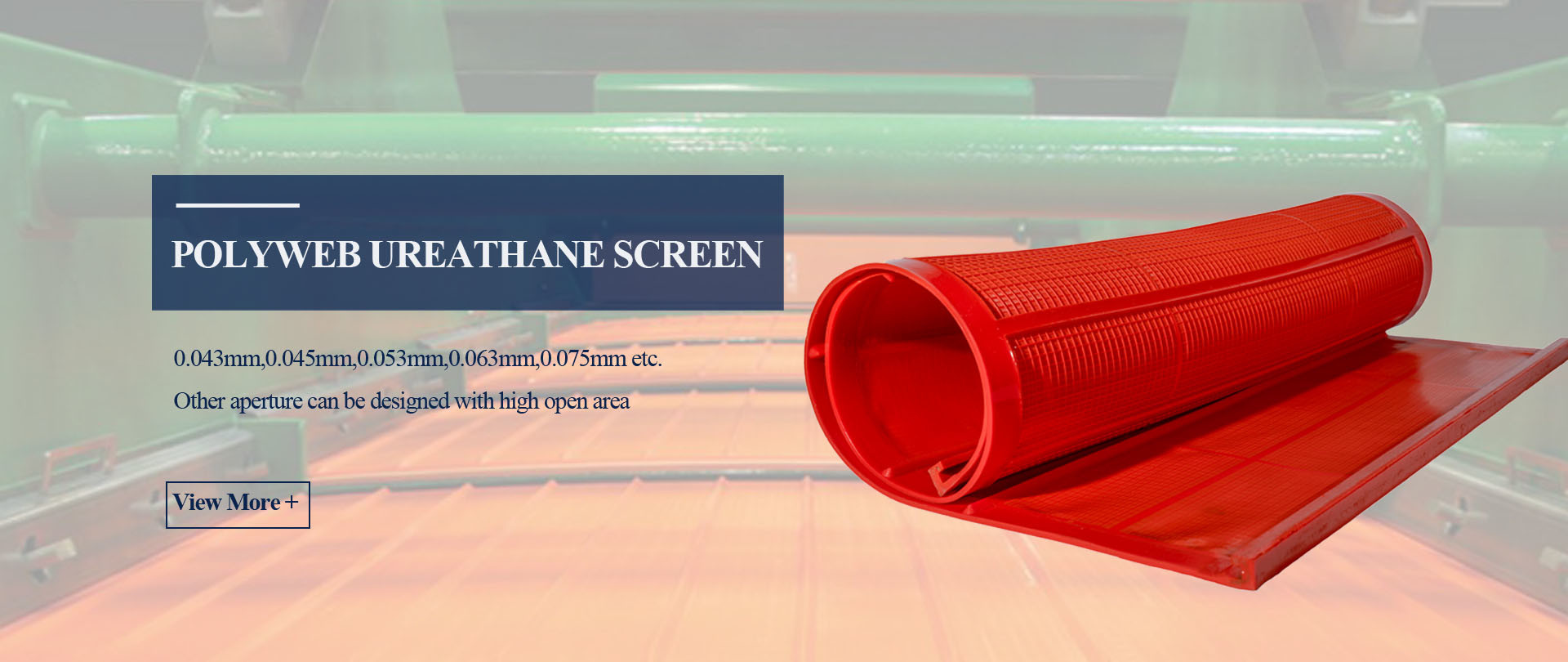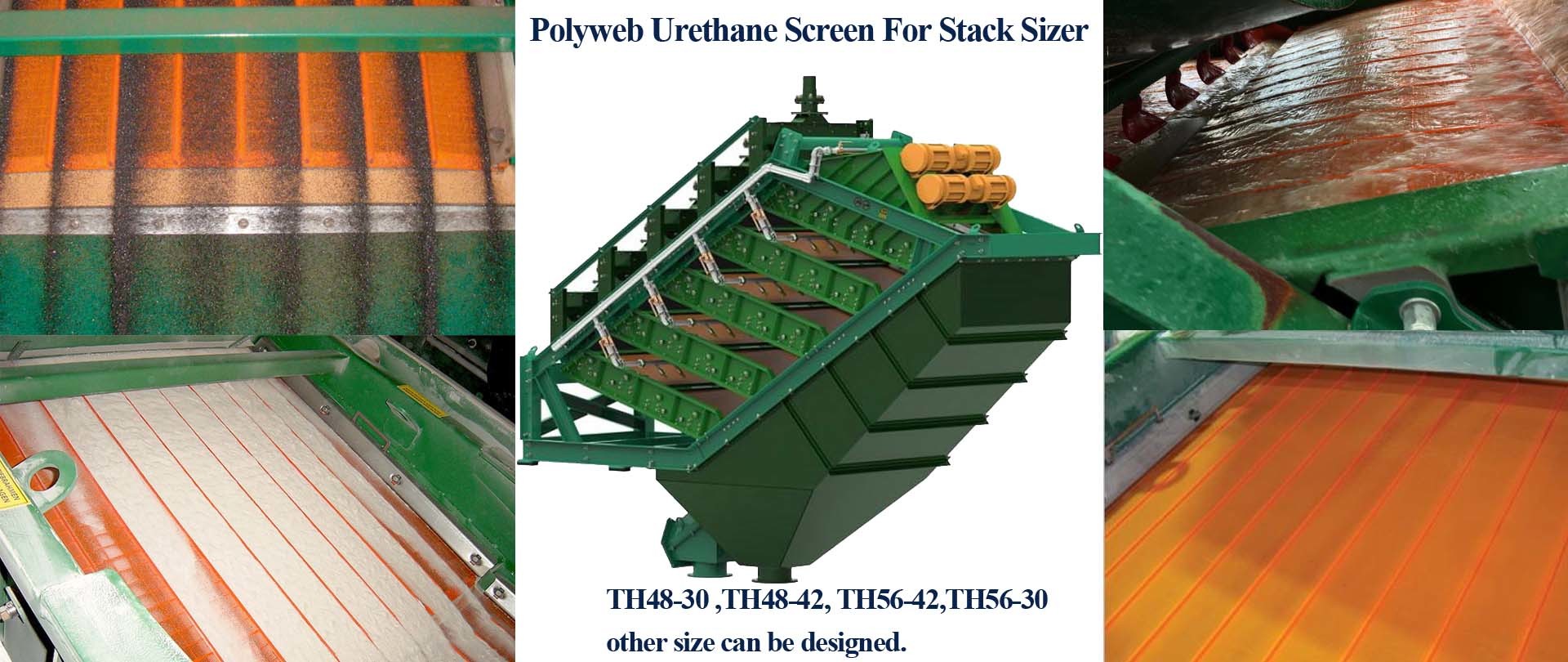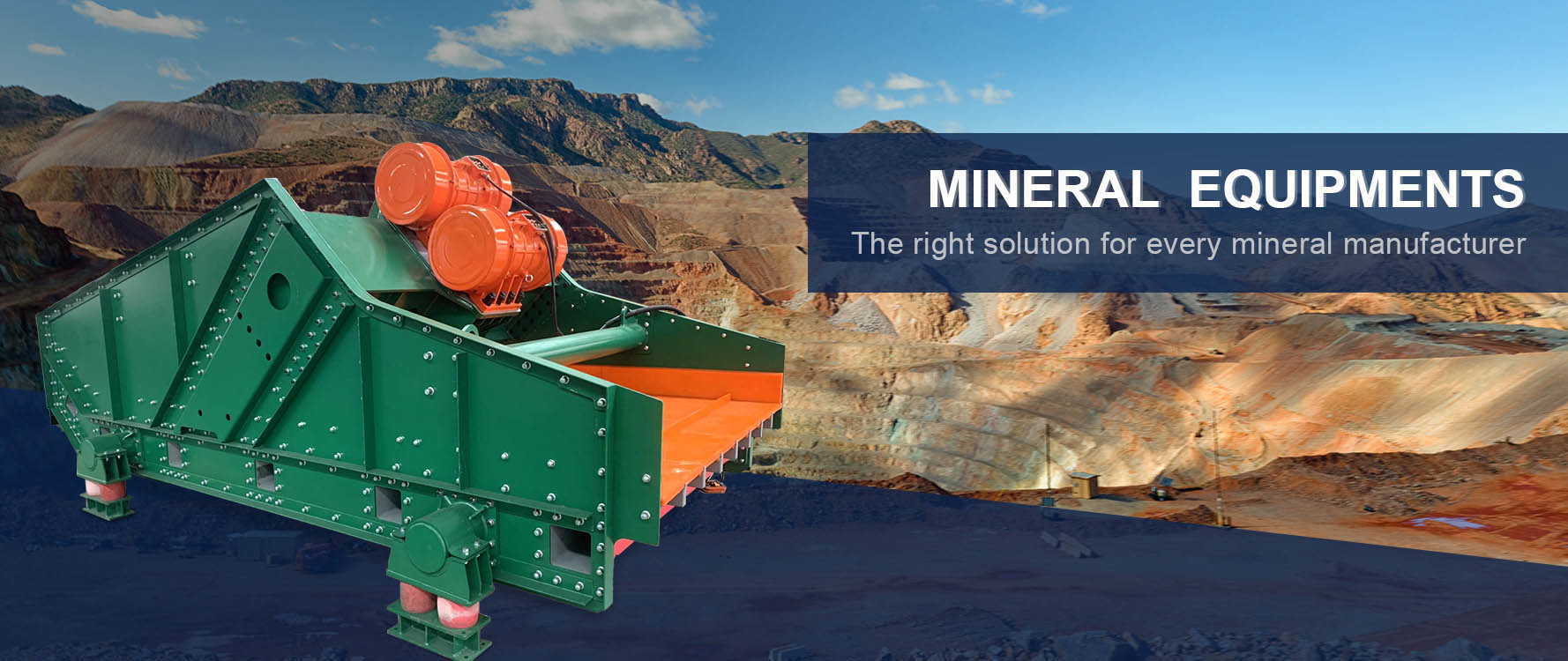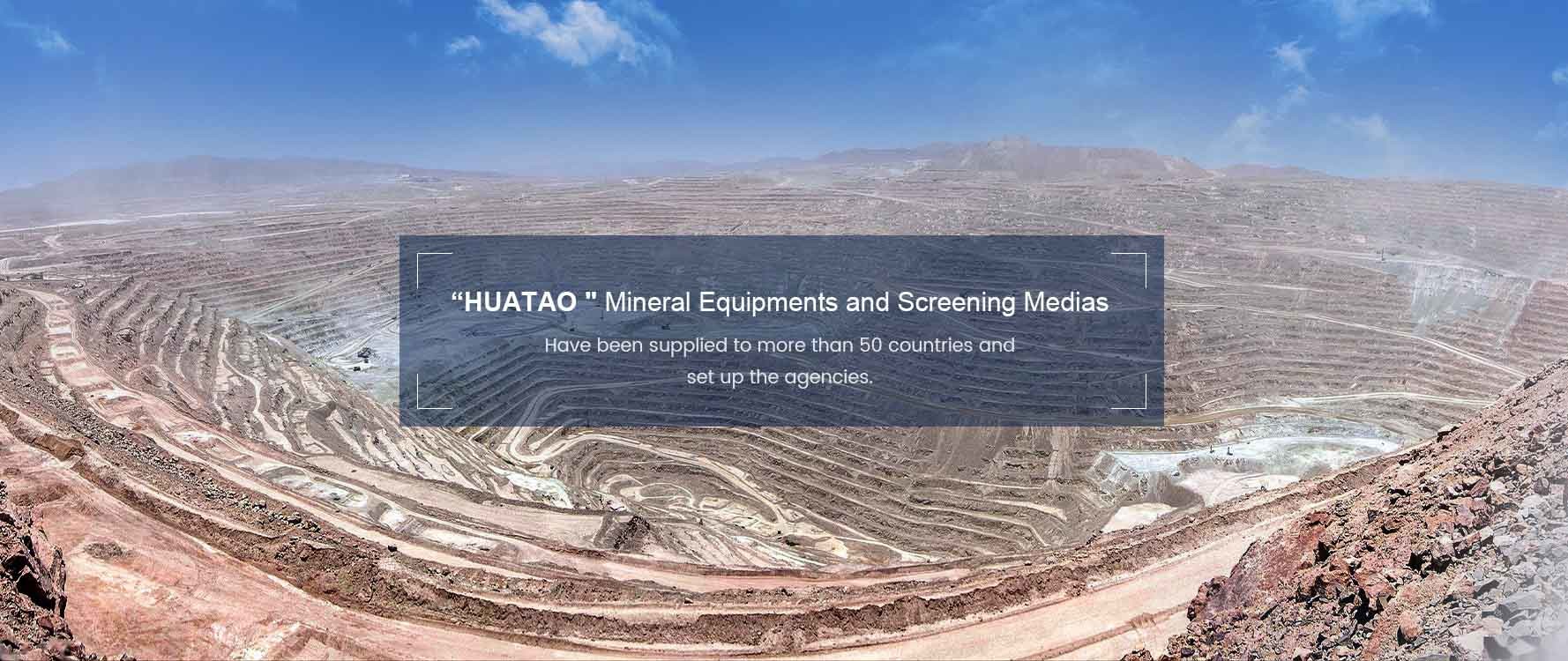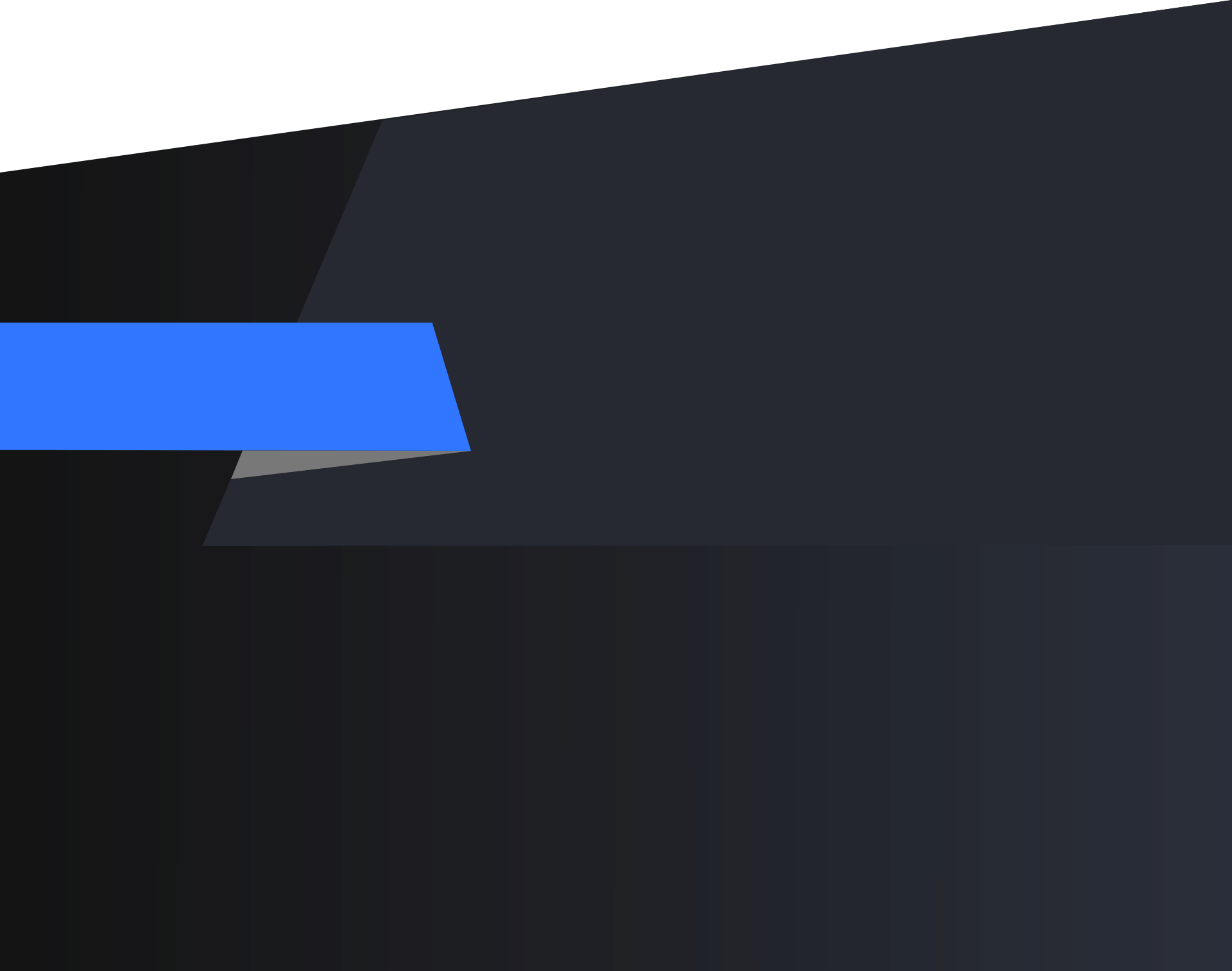Addressing Polyurethane Screen Blinding: A Guide to Causes and Remedies
2025-11-24
.gtr-container-7f2d9e {
font-family: Verdana, Helvetica, "Times New Roman", Arial, sans-serif;
color: #333;
line-height: 1.6;
padding: 16px;
box-sizing: border-box;
overflow-wrap: break-word;
}
.gtr-container-7f2d9e p {
margin: 16px 0;
font-size: 14px;
text-align: left;
}
.gtr-container-7f2d9e .gtr-heading {
font-size: 18px;
font-weight: bold;
margin: 24px 0 16px 0;
text-align: left;
}
.gtr-container-7f2d9e .gtr-sub-heading {
font-size: 14px;
font-weight: bold;
margin: 16px 0 8px 0;
text-align: left;
display: block;
}
.gtr-container-7f2d9e .gtr-separator {
height: 1px;
background-color: rgba(0, 0, 0, 0.1);
border: none;
margin: 32px 0;
}
.gtr-container-7f2d9e ul {
margin: 16px 0;
padding-left: 0;
list-style: none !important;
}
.gtr-container-7f2d9e ul li {
position: relative;
padding-left: 1.5em;
margin-bottom: 8px;
font-size: 14px;
text-align: left;
list-style: none !important;
}
.gtr-container-7f2d9e ul li::before {
content: "•" !important;
position: absolute !important;
left: 0 !important;
color: #007bff;
font-size: 1em;
line-height: 1.6;
}
.gtr-container-7f2d9e a {
color: #007bff;
text-decoration: none;
}
.gtr-container-7f2d9e a:hover {
text-decoration: underline;
}
.gtr-container-7f2d9e img {
vertical-align: middle;
}
@media (min-width: 768px) {
.gtr-container-7f2d9e {
padding: 24px 40px;
}
}
Screen blinding is a persistent challenge in industries relying on polyurethane screens for material classification. This issue not only disrupts workflow but also increases operational costs. Here, we explore the leading causes of blinding and provide practical strategies to mitigate its impact.
Primary Causes of Blinding
Material-Related FactorsScreen blinding often stems from material properties such as high moisture content, excessive fine mud, or a high proportion of near-mesh particles. These conditions promote particle adhesion and aperture clogging, reducing screening efficiency.
Design and Configuration IssuesScreens with low open area or poorly chosen aperture shapes struggle to handle certain materials. Additionally, smooth surfaces without anti-blinding features like grooves or protrusions are prone to clogging.
Operational ParametersInadequate vibration intensity, incorrect screen angle, and overloading are common operational pitfalls. Without real-time cleaning aids, such as spray systems or rubber ball cleaners, screens cannot self-clean effectively.
Maintenance OversightsIrregular cleaning, improper installation, and failure to monitor feed rates contribute to chronic blinding. Residual materials left on screens harden, compounding the problem over time.
Immediate and Long-Term Solutions
Emergency Interventions
Employ high-pressure water or air to clear blockages.
Adjust vibration settings or screen angle temporarily to restore functionality.
Reduce material feed to alleviate screen congestion.
Preventive Strategies
Invest in screens with optimized open area and aperture designs.
Incorporate cleaning mechanisms like ultrasonic devices or rubber ball trays.
Train personnel in proper installation, operation, and maintenance protocols.
Industry Implications
Proactive management of screen blinding not only boosts productivity but also lowers maintenance costs and extends equipment life. Companies that adopt these best practices can achieve smoother operations and higher output quality.
HUATAO Group offers specialized screening solutions and technical support to help industries overcome blinding challenges and optimize performance.
Contact Information:Email: annie.lu@huataogroup.comWebsite: www.tufflexscreen.comWhatsApp: +86 18032422676
20 Hashtags:#PolyurethaneScreen #ScreenBlinding #ScreeningEfficiency #MiningEquipment #MaintenanceSolutions #HUATAOGroup #IndustrialMaintenance #MaterialProcessing #BlindingPrevention #OperationalEfficiency #VibrationScreening #ScreenDesign #MineralProcessing #CostReduction #PreventiveMaintenance #EquipmentLongevity #MiningIndustry #QuickFixes #TechSolutions #ProductionOptimization
View More
Exploring the Five Primary Types of Quartz Sand and Their Industrial Significance
2025-11-22
Quartz sand, a material celebrated for its hardness, chemical inertness, and thermal stability, is categorized into five main types based on purity, processing methods, and application areas. This article provides a detailed overview of these variants and their roles in driving industrial innovation.
1. Ordinary Quartz Sand
Produced through basic crushing, washing, and screening processes, ordinary quartz sand contains SiO₂ levels ranging from 90% to 99%. With a refractory temperature of 1750°C, it is widely used in metallurgy, glass production, water filtration, and sandblasting.
2. Refined Quartz Sand
Refined quartz sand undergoes advanced processing to achieve SiO₂ purity of 99–99.6%. Its controlled particle size (2–2500 mesh) makes it ideal for high-grade glass, precision casting, refractory linings, and abrasive tools.
3. High Purity Quartz Sand
This grade boasts SiO₂ content of 99.5–99.9% and extremely low iron content (Fe₂O₃ ≤ 0.001%). It is essential in manufacturing high-performance glass, ceramics, acid-resistant construction materials, and electronic components.
4. Fused Quartz Sand
Characterized by exceptional thermal stability and minimal thermal expansion, fused quartz sand is produced via capacitance oxidation. It serves as a key material in paints, epoxy casting, electronic encapsulation, and advanced ceramics.
5. Silica Flour
Silica flour consists of ultra-fine particles, with over 80% of the material below 0.001 mm. It enhances the performance of concrete, polymers, adhesives, rubber products, and specialty coatings.
Industrial Relevance and Selection Criteria
Each type of quartz sand meets specific industrial demands. While ordinary and refined sands are suited for conventional manufacturing, high purity and fused quartz sands cater to high-tech and precision applications. Silica flour is increasingly used in composite materials and chemical formulations.
Selecting the appropriate type depends on factors such as chemical composition, particle size, thermal properties, and intended use.
Partnering for Precision and Efficiency
HUATAO Group supports industries with technical expertise and customized screening solutions for all types of quartz sand. From material analysis to process optimization, we help clients achieve superior product quality and operational efficiency.
Contact Information:Email: annie.lu@huataogroup.comWebsite: www.tufflexscreen.comWhatsApp: +86 18032422676
20 Hashtags:#QuartzSand #OrdinaryQuartzSand #HighPurityQuartz #RefinedQuartz #FusedQuartz #SilicaFlour #IndustrialApplications #GlassManufacturing #Electronics #Ceramics #Construction #Refractory #Metallurgy #HUATAOGroup #MaterialScience #MineralProcessing #QuartzUses #IndustrialMinerals #SandProcessing #TechMaterials
Engaging Social Media Title:From Glass to Electronics: How 5 Types of Quartz Sand Power Global Industries
View More
How HUATAO Group’s Innovative Screens Transform Efficiency for Wet, Sticky Materials
2025-11-22
In the mining industry, where every minute of downtime translates to lost revenue, screening efficiency is non-negotiable. Wet, sticky materials—coal, bauxite, clay, and wet sand—have long plagued operations, causing traditional steel screens to clog, wear out, and fail prematurely. The result? Frequent replacements, unplanned downtime, and soaring operational costs that erode profitability. Today, HUATAO Group’s Flip-Flop Screen Mesh is changing the game, offering an anti-blinding, wear-resistant solution that delivers a service life 3-5 times longer than steel screens. This news dynamic explores how this innovative mesh solves industry pain points, delivers tangible economic benefits, and becomes a cornerstone of efficient mining operations.
The Hidden Costs of Traditional Steel Screens in Wet, Sticky Mining Applications
Traditional steel screens are ill-equipped to handle wet, sticky materials, leading to two critical types of clogging: adhesive clogging, where moisture bonds fine particles to the mesh surface, and mechanical blocking, where pressure compacts particles into hard cakes that steel cannot dislodge. Once clogged, screening efficiency drops by 50% or more, resulting in uneven material separation and wasted resources. The financial toll is staggering: an Indian coal mine lost thousands of dollars hourly to downtime, with steel screens wearing out in weeks and costing tens of thousands annually in replacements. An iron ore operation faced monthly screen changes, costly labor, and frequent equipment breakdowns—all of which dragged down output and profitability. For mining operations, these hidden costs have long been an unavoidable burden—until now.
Flip-Flop Screen Mesh: The Innovative Solution to Mining’s Screening Woes
HUATAO Group’s Flip-Flop Screen Mesh is engineered to address the root causes of screen failure in wet, sticky mining applications. Its elastic, flexible design is the key to its superior performance: during vibration, the mesh dynamically moves, shaking loose adhered particles and breaking up compacted material cakes—eliminating both adhesive and mechanical clogging. This anti-blinding feature ensures consistent screening efficiency above 95%, even for the stickiest materials. Additionally, the mesh is crafted with high-tensile-strength materials, offering exceptional wear and impact resistance that withstands high-hardness ores like iron ore and bauxite. Its hydrophobic surface repels moisture, minimizing particle adhesion and reducing cleaning frequency. The result? A service life 3-5 times longer than steel screens, with replacement costs cut by 60%.
Real-World Results: How Mines Are Benefiting from Flip-Flop Screen Mesh
Mines across the globe are already reaping the rewards of HUATAO’s Flip-Flop Screen Mesh:
A Shanxi coal mine extended screen lifespan from 12 months to 68 months, cutting replacement costs by 60% and eliminating clogging-related downtime.
An iron ore operation increased monthly output by 20% after switching to the mesh, with only 1-2 annual screen changes instead of monthly replacements.
A wet coal plant boosted capacity by 40-60%, increasing throughput from 150-180 tons/hour to 250-300 tons/hour—all by eliminating screen clogging.
These results are not isolated; they demonstrate the transformative impact of Flip-Flop Screen Mesh on mining profitability and efficiency. Whether used for iron ore screening, coal washing, sand and gravel classification, or bauxite processing, the mesh delivers consistent, reliable performance that traditional steel screens cannot match.
Customized Solutions and Expert Support from HUATAO Group
Every mining operation is unique, with distinct material properties, equipment specifications, and operational needs. HUATAO Group understands this, offering customized Flip-Flop Screen Mesh solutions tailored to each mine’s specific requirements. Our team of technical experts works closely with clients to analyze material characteristics, match mesh specifications to existing equipment, and adjust parameters for optimal performance. We also provide free material screening analysis and sample testing, ensuring that the solution meets or exceeds client expectations. With professional support throughout the selection, installation, and operation phases, HUATAO helps mines maximize the value of their investment and achieve long-term efficiency gains.
Conclusion
Flip-Flop Screen Mesh is a game-changer for mining operations struggling with wet, sticky materials. Its anti-blinding design, wear resistance, long service life, and cost-saving benefits make it an indispensable tool for optimizing screening efficiency and reducing operational costs. As the mining industry continues to prioritize productivity and profitability, HUATAO Group’s Flip-Flop Screen Mesh is emerging as the preferred choice for forward-thinking operations. By investing in this innovative solution, mines can eliminate clogging-related downtime, cut replacement costs, and boost throughput—positioning themselves for success in a competitive market.
Contact Information
Email: annie.lu@huataogroup.comMobile: +86 18032422676 (WhatsApp/WeChat)Website: www.tufflexscreen.com
#FlipFlopScreenMesh #MiningScreening #AntiBlinding #WearResistant #HUATAOGroup #MiningSolutions #CoalProcessing #IronOreScreening #ScreeningEfficiency #CostSaving #MiningEquipment #WetScreening #StickyMaterialScreening #MineProductivity #IndustrialScreening #DewateringScreen #AggregateScreening #MiningTech #AntiClogScreen #PolyurethaneScreen
View More
Rubber Screen Mesh: Transforming Industrial Screening Operations
2025-11-22
.gtr-container-7f8g9h {
font-family: Verdana, Helvetica, "Times New Roman", Arial, sans-serif;
color: #333;
line-height: 1.6;
padding: 20px;
box-sizing: border-box;
max-width: 100%;
overflow-x: hidden;
}
.gtr-container-7f8g9h p {
font-size: 14px;
margin: 16px 0;
text-align: left !important;
line-height: 1.6;
}
.gtr-container-7f8g9h strong {
font-weight: bold;
}
.gtr-container-7f8g9h__main-title {
font-size: 18px;
font-weight: bold;
margin: 32px 0 16px;
text-align: left;
line-height: 1.3;
}
.gtr-container-7f8g9h__sub-title {
font-size: 18px;
font-weight: bold;
margin: 24px 0 12px;
text-align: left;
line-height: 1.4;
}
.gtr-container-7f8g9h__divider {
border: none;
border-top: 1px solid rgba(0, 0, 0, 0.1);
margin: 32px 0;
height: 0;
}
.gtr-container-7f8g9h ul {
list-style: none !important;
margin: 16px 0;
padding-left: 25px;
}
.gtr-container-7f8g9h ul li {
position: relative;
margin-bottom: 8px;
font-size: 14px;
text-align: left;
line-height: 1.6;
list-style: none !important;
}
.gtr-container-7f8g9h ul li::before {
content: "•" !important;
color: #007bff; /* A subtle industrial blue for bullets */
font-size: 18px;
position: absolute !important;
left: -20px !important;
top: 0;
line-height: inherit;
}
.gtr-container-7f8g9h ol {
list-style: none !important;
margin: 16px 0;
padding-left: 25px;
counter-reset: list-item;
}
.gtr-container-7f8g9h ol li {
position: relative;
margin-bottom: 8px;
font-size: 14px;
text-align: left;
line-height: 1.6;
counter-increment: none;
list-style: none !important;
}
.gtr-container-7f8g9h ol li::before {
content: counter(list-item) "." !important;
color: #007bff; /* A subtle industrial blue for numbers */
font-size: 14px;
position: absolute !important;
left: -25px !important;
top: 0;
width: 20px;
text-align: right;
line-height: inherit;
}
.gtr-container-7f8g9h img {
display: block;
margin: 16px 0;
max-width: 100%; /* Allow images to scale down on smaller screens */
height: auto; /* Maintain aspect ratio */
}
.gtr-container-7f8g9h a {
color: #007bff;
text-decoration: none;
}
.gtr-container-7f8g9h a:hover {
text-decoration: underline;
}
.gtr-container-7f8g9h__contact-info {
margin: 16px 0;
font-size: 14px;
text-align: left;
}
.gtr-container-7f8g9h__hashtags {
margin: 16px 0;
font-size: 12px;
color: #666;
text-align: left;
}
@media (min-width: 768px) {
.gtr-container-7f8g9h {
padding: 30px 50px;
}
.gtr-container-7f8g9h__main-title {
font-size: 24px;
margin: 40px 0 20px;
}
.gtr-container-7f8g9h__sub-title {
font-size: 20px;
margin: 30px 0 15px;
}
.gtr-container-7f8g9h p {
margin: 20px 0;
}
.gtr-container-7f8g9h ul,
.gtr-container-7f8g9h ol {
margin: 20px 0;
}
.gtr-container-7f8g9h__divider {
margin: 40px 0;
}
}
Rubber Screen Mesh: Transforming Industrial Screening Operations
Industrial screening processes are critical to productivity in sectors like mining, coal processing, and aggregate production. However, traditional steel screens often struggle with clogging, rapid wear, and high maintenance costs. Rubber screen mesh, with its innovative design and material properties, offers a reliable and efficient alternative.
Addressing Traditional Screening Challenges
Steel screens are prone to clogging when handling wet or sticky materials, leading to frequent downtime and reduced efficiency. In abrasive environments, their short lifespan results in recurring replacement costs. Rubber screen mesh tackles these issues head-on with its elastic polymer construction, which prevents material adhesion and resists wear.
Case studies highlight its impact:
A coal preparation plant increased its processing capacity from 150-180 to 250-300 tons per hour by eliminating clogging.
An iron ore mine reduced screen replacement frequency to just 1-2 times per year, significantly cutting labor and material expenses.
Core Features of Rubber Screen Mesh
Anti-Blinding DesignThe elastic pore structure and hydrophobic surface of rubber screen mesh minimize clogging, ensuring consistent performance even with high-moisture materials.
Extended Service LifeWith 3-5 times the lifespan of steel screens, rubber screen mesh withstands abrasive and corrosive conditions, making it a cost-effective choice for demanding applications.
Energy EfficiencyWeighing 50% less than steel screens, rubber screen mesh reduces the load on screening equipment, lowering power consumption by 15-20%. Its shock-absorbing properties also protect motors and bearings from damage.
Versatile Applications
Rubber screen mesh is widely used in:
Mining: For screening iron ore, copper ore, and bauxite with precision and durability.
Coal Processing: Enhancing dewatering efficiency and reducing moisture content in coal slime.
Aggregate Production: Classifying wet sand and gravel while maintaining high accuracy.
Environmental Protection: Supporting sludge dewatering in wastewater treatment plants with corrosion-resistant performance.
Customized Solutions from HUATAO Group
HUATAO Group specializes in tailoring rubber screen mesh to meet specific operational requirements. Our services include:
Free material analysis and sample testing.
Customized aperture sizes, thicknesses, and installation designs.
On-site technical support for seamless integration.
Conclusion
Rubber screen mesh is redefining industrial screening with its anti-clogging capabilities, durability, and energy-saving benefits. By adopting this technology, companies can achieve significant improvements in efficiency, cost savings, and productivity.
Partner with HUATAO Group to optimize your screening operations with cutting-edge solutions.
Contact Information:Email: annie.lu@huataogroup.comWebsite: www.tufflexscreen.comWhatsApp: +86 18032422676
20 Hashtags:#RubberScreenMesh #AntiClogging #IndustrialScreening #MiningIndustry #CoalProcessing #WearResistant #HUATAOGroup #ScreeningTechnology #Efficiency #CostSavings #AggregateProduction #EnvironmentalProtection #Innovation #Productivity #MaintenanceReduction #EnergyEfficient #CustomSolutions #TechnicalSupport #OperationalExcellence #ScreeningSolutions
View More
Strategic Management of Polyurethane Dewatering Screens in Coal Washing Applications
2025-11-21
.gtr-container-k9m2p1 {
font-family: Verdana, Helvetica, "Times New Roman", Arial, sans-serif;
color: #333;
line-height: 1.6;
padding: 16px;
box-sizing: border-box;
}
.gtr-container-k9m2p1 p {
margin-top: 0;
margin-bottom: 1em;
font-size: 14px;
text-align: left;
word-break: normal;
overflow-wrap: normal;
}
.gtr-container-k9m2p1 .gtr-heading-level-4 {
font-size: 18px;
font-weight: bold;
margin-top: 2em;
margin-bottom: 1em;
color: #0056b3;
text-align: left;
}
.gtr-container-k9m2p1 ul {
list-style: none !important;
padding-left: 20px;
margin-top: 0;
margin-bottom: 1em;
}
.gtr-container-k9m2p1 ul li {
position: relative;
padding-left: 15px;
margin-bottom: 0.5em;
font-size: 14px;
text-align: left;
list-style: none !important;
}
.gtr-container-k9m2p1 ul li::before {
content: "•" !important;
position: absolute !important;
left: 0 !important;
color: #007bff;
font-size: 1em;
line-height: 1.6;
}
.gtr-container-k9m2p1 hr {
border: none;
border-top: 1px solid #ddd;
margin: 2em 0;
}
.gtr-container-k9m2p1 img {
/* Per strict instruction: no layout or size styles like max-width, display: block, margin: auto */
/* Images will render at their intrinsic width/height attributes, potentially overflowing */
}
.gtr-container-k9m2p1 a {
color: #007bff;
text-decoration: none;
}
.gtr-container-k9m2p1 a:hover {
text-decoration: underline;
}
.gtr-container-k9m2p1 strong {
font-weight: bold;
}
@media (min-width: 768px) {
.gtr-container-k9m2p1 {
padding: 24px;
}
.gtr-container-k9m2p1 p {
margin-bottom: 1.2em;
}
.gtr-container-k9m2p1 .gtr-heading-level-4 {
margin-top: 2.5em;
margin-bottom: 1.2em;
}
.gtr-container-k9m2p1 ul {
padding-left: 25px;
}
.gtr-container-k9m2p1 ul li {
padding-left: 20px;
}
}
Coal washing plants globally rely on polyurethane dewatering screens for efficient separation and classification. To ensure optimal performance and durability, a lifecycle-based approach covering selection, installation, operation, maintenance, and storage is essential.
Precision Selection for Specific Needs
Screen efficiency starts with alignment to coal characteristics and process goals:
High-moisture coal benefits from large cone angles and anti-clogging aperture designs.
Abrasive coal types require wear-resistant screens with reinforced substrates.
Customization based on vibration parameters and slot dimensions ensures ≥95% fit accuracy.
Installation Protocols for Reliability
Standardized installation prevents operational failures:
Pre-installation inspections should address groove conditions and screen defects.
Post-installation validation via idle runs and test feeds confirms alignment and functionality.
Operational Vigilance and Control
Proactive monitoring sustains screen health:
Regular inspections and controlled cleaning with compressed air prevent clogging.
Load management—limiting feed to 90% of capacity—and even distribution mitigate wear.
Environmental measures, such as sealing checks and corrosion-resistant selections, enhance durability.
Systematic Maintenance for Longevity
Routine care significantly extends service life:
High-pressure rinsing post-shift preserves aperture clarity.
Scheduled bolt tightening and wear tracking preempt failures.
Timely repairs and replacements maintain screening precision.
Storage and Resource Optimization
Effective storage practices preserve screen utility:
Screens should be stored in controlled environments to prevent material degradation.
Partially worn screens can be repurposed, reducing waste and costs.
Industry Implications
Implementing these guidelines helps coal washing plants achieve sustained screening performance, lower operational costs, and improved productivity. HUATAO Group supports these efforts with tailored solutions and technical expertise.
Contact Information:Email: annie.lu@huataogroup.comWebsite: www.tufflexscreen.comWhatsApp: +86 18032422676
20 Hashtags:#PolyurethaneScreen #CoalWashing #DewateringSolutions #ScreenInstallation #OperationalGuidelines #HUATAOGroup #MiningIndustry #CoalProcessing #MaintenanceTips #Efficiency #ResourceOptimization #IndustrialScreening #WearResistance #CoalPreparation #ScreeningTechnology #LifecycleManagement #PreventiveMaintenance #CostReduction #TechnicalSupport #InnovationInMining
View More



